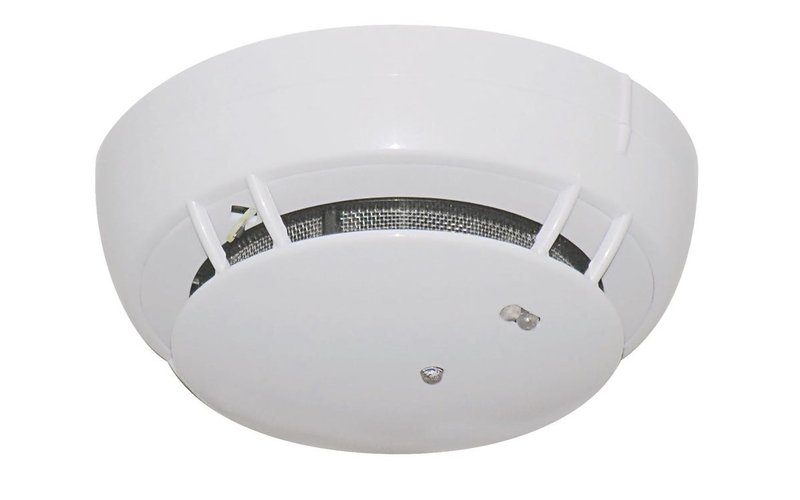This fire detector has an elegant design, it is the slimmest multi-sensor detector on the market.
- Installer-friendly
- Meets European standard
- Universal base
- Two-wire system
- Built-in short circuit isolator
- Optical alarm indicator (red LED)
- Emergency lighting in the event of fire (white LED)
- Universal multi-sensor
- CO detection in option
Argina detectors have an easy-to-fit detector base incorporating the necessary connectors, into which the detector head is plugged.
The detector head can be fitted to the base and locked without the use of special tools.
The basic principle of the analogue system is that the detectors are sensitive addressable measuring devices that are in continuous communication with the control unit. The detectors send their measurements continuously to the control unit, which stores them in a data bank. The alarm status can be determined from these measurements, using software algorithms and the specific parameters for each detector (including operating mode, delay, alarm level). In that case the red LED lights up.
The detector can be set up via programming to detect according to one or more criteria. This is done partly in position in communication with the control unit and/or using an optical remote control. The detector contains no switches, all on-site parameters being stored in an EEPROM.
The detector’s address is assigned via the remote control. The status of all measuring devices can be verified at any time via the control unit and/or an optical remote control.
The unique bi-directional communication protocol between the control unit and its detectors filters out any parasitic interference in such a way that using screened cable is unnecessary.
Each detector has short-circuit protection that isolates it in the event of a detector fault.
Working principle
- As an optical detector: based on the Tyndall effect. The measuring chamber contains an infrared light source and the photoelectric diode that acts as a receiver, located such that they are not aligned optically. If visible smoke enters the detector, the smoke particles reflect the infra-red light, as a result of which the detector sees pulses. An electronic switch uses these to determine the smoke concentration (conforming to the EN54-7 standard).
- As a thermomaximal detector: an alarm is reported if the ambient temperature exceeds a certain value. This value can be set via the control unit or a remote control (conforming to the EN54-5 Class 1 standard).
- As a thermovelocimetric detector: an alarm is reported if a particular temperature rise occurs within a certain period (conforming to the EN54-5 Class 1 standard). The control unit uses software to determine this, based on multiple successive measurements.
- As a multi-sensor: an optical detector whose sensitivity increases as the temperature rises (conforming to CEA 4021 standards).
PACKAGING
- Material: ABS
- Dimensions: Diameter: 100mm
- Height: 40mm base incl.
POWER SUPPLY VOLTAGE
- 9 - 29 VDC
POWER CONSUMPTION
- Quiescent: 0.5mA
- Alarm: 2.5mA
AMBIENT TEMPERATURE
- -10°C to +60°C
MAXIMUM HUMIDITY
- 95% relative
- non-condensing
ALARM INDICATOR
- red LED
EMERGENCY LIGHTING
- white LED
OPTIONAL
- integral siren (85dB)
- relay module
- LED driver module (30mA)
- high base
STANDARDS
- EN54 - 5/7/17
- CEA 4021
Available as:
- Optical
- Thermical
- Thermovelocimetric
- Multi-criteria
- CO






